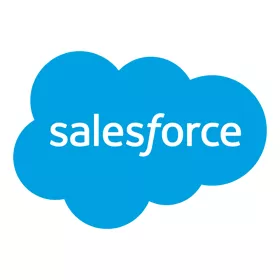
Smarter targeting and more ROI with a first-of-its-kind integration

At a glance
To better understand its Amazon Prime Video ad performance, Salesforce partnered with Slalom for comprehensive data integration and analysis, audience expansion, and messaging optimization.
Impact
By integrating Salesforce Data Cloud with Amazon Marketing Cloud—a world first—Salesforce enhanced its audience reach and optimized its advertising strategy to better serve customers.
Key Services
Industry
Software
Key Technologies / Platforms
- Salesforce Data Cloud
- Amazon Marketing Cloud
A new frontier for B2B advertising
Picture this: You’re settling in to watch a TV show for the night, perhaps catching up on the latest season of Yellowstone. The episode cuts to a commercial break as Kevin Costner glares menacingly at the camera. Suddenly, you’re dropped into a train heist with Matthew McConaughey, who’s fighting bad guys stealing customer data like chat transcripts, purchase history, and sales forecasts.
This situation isn’t a new movie project for McConaughey—yet—but rather an advertisement promoting the security of Salesforce’s AI solution, Agentforce. A B2B company advertising on Amazon Prime Video might seem like an unusual avenue at first glance. Yet, with over 200 million global monthly users, the Amazon platform is ripe with opportunities for B2B brands.
“Brands like Salesforce, which don’t sell on Amazon but use it as an advertising channel, still see benefit and value in the insights available through Amazon Marketing Cloud [AMC],” says Jamie Vann, a director at Slalom.
Working with Slalom, Salesforce sought to improve its Amazon ad tech performance from “alright, alright, alright” (as McConaughey would say) to excellent, opening up new customer connections along the way.

Improved targeting and personalization
Alanna Woodrow, a director of global brand marketing at Salesforce, emphasized a need that rings true for businesses everywhere: proving the value of your marketing efforts.
“Knowing your audience is crucial,” Woodrow says. “We understand that even while we might have the best-crafted campaigns, if we’re not able to reach the right audience at the right time with the right message, that’s wastage, and we’re missing the mark. This engagement offered the opportunity to reduce that wastage, diversify our media mix, and reach our audiences.”
Many customers experience ad fatigue, with brands trying to get front and center across different platforms, such as video, web, social, and email. One obstacle the teams had to navigate was ensuring viewers received the right message for their particular user journeys. Another challenge was connecting consumer profiles to business profiles. Introducing multiple data points, from email addresses to phone numbers, delivered stronger audience insights and helped identify customers for targeting.
“Increasingly, our lives are blurred across business and consumer worlds,” Vann says. “Through AMC, we’re able to showcase how to connect business-to-consumer perspectives by sharing messaging outside their work context.”
To more extensively reach those customers, Salesforce needed to identify higher-impact audiences across Amazon. It also looked to optimize advertising efforts on the platform to generate better-quality engagement and conversions. Salesforce called on Slalom to help tackle those goals.
A world-first integration
Slalom and Salesforce set up a new integration between Salesforce Data Cloud and Amazon Marketing Cloud—the first-ever instance of fully integrating the two platforms. The integration meant we could upload specific target audience segments created from our first-party data into AMC, which allowed for the activation of more relevant and impactful messaging and advertising campaigns.
Salesforce connected Data Cloud with Amazon Marketing Cloud to build a unified profile on each customer in a safe and trusted way that doesn’t share personal information or risk compliance issues. Slalom utilized its deep expertise with Amazon Ads to ensure all the moving parts worked together.
“The data is in real time, so there are constant updates of customers entering Salesforce Data Cloud and flowing into Amazon Marketing Cloud,” says Vann. “That means more data that we can analyze and a better quality of analysis we can put out.”
Salesforce could see where and how people saw and interacted with the ads, and make adjustments accordingly. For instance, the McConaughey data heist spot didn’t necessarily perform best during Western shows like Yellowstone. Instead, science fiction and anime viewers, as well as deal seekers, were the most engaged audiences.
“Seeing this data made us consider, from a targeting perspective, do we shift our messaging and positioning to align with their mindset? Or do we focus more on brand differentiation and long-term value? That’s the route we’ve taken,” Woodrow says. “It’s always good to know your audience’s behaviors and what they’re interested in. Having partners and this capability helps us be very effective in the way that we execute our marketing strategies.”
Driving B2B results through Amazon ad tech
Though Slalom has ample experience supporting retail customers like Procter & Gamble and the LEGO Group that sell directly to consumers on Amazon, working with a B2B company like Salesforce required a bit of a unique approach. As targeting a B2B audience in a consumer platform was likely to achieve a lower match rate on fields like email, additional data points were leveraged to expand the match rate for a B2B client, and an additional focus was placed on creating high-value look-alike audiences to improve quality reach.
“Based on first-party data, we built look-alike audiences that matched customers more likely to be high value,” Vann says. “Not only would it grow their audience, but these would likely be higher-quality leads, so they would go downstream in the sales funnel at a bigger proportion.”
Slalom’s analysis led to building three high-impact audiences, which increased high-value audience reach by 2.5 million people across various segments.
“We’re able to overlap what we’ve done with Amazon in the past with this new segmentation,” says William Sakaris, a senior analyst and experimentation lead at Salesforce. “We could see how much of our audience we already reached with our targeting and audience strategy without using first-party data. There’s a huge opportunity for growth still on this platform to go after those other users.”

The implementation also included capabilities like audience suppression. Since lifelong fans and customers already support Salesforce, the company wanted to ensure they saw more relevant services instead of messaging targeted toward new customers.
“Salesforce is a big enterprise platform, and we’re proving the value to B2B enterprises of these third-party integrations like Amazon Marketing Cloud,” Vann says.
A more targeted approach helps optimize both advertising messaging and creative. It also opens the door for further competitive marketing strategies to connect with additional customers.
“You don’t have to spend more money to get bigger results,” Vann says. “We help brands be smarter about their ad spend and how to use it strategically to get more conversions.”
“From a marketer’s perspective, it’s an absolute no-brainer,” Woodrow adds. “You’re more efficient, you’re more targeted, you know more about your audiences. You can take them on a new journey. All of it is goodness when you’re able to use data to inform your decision-making.”




